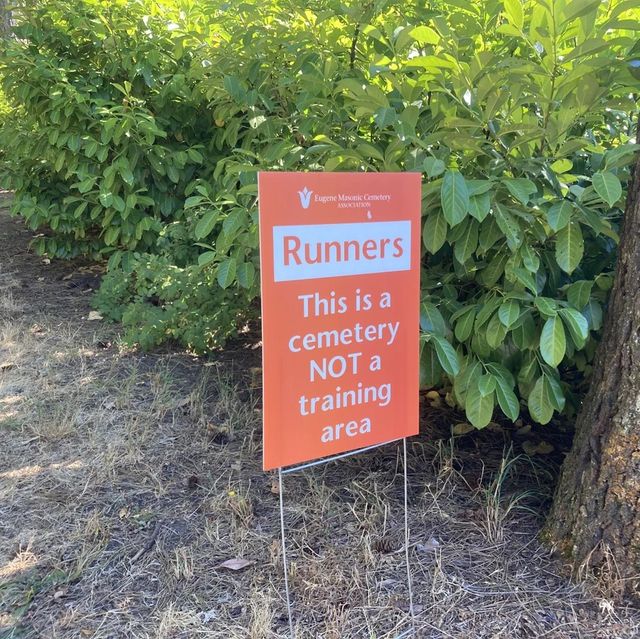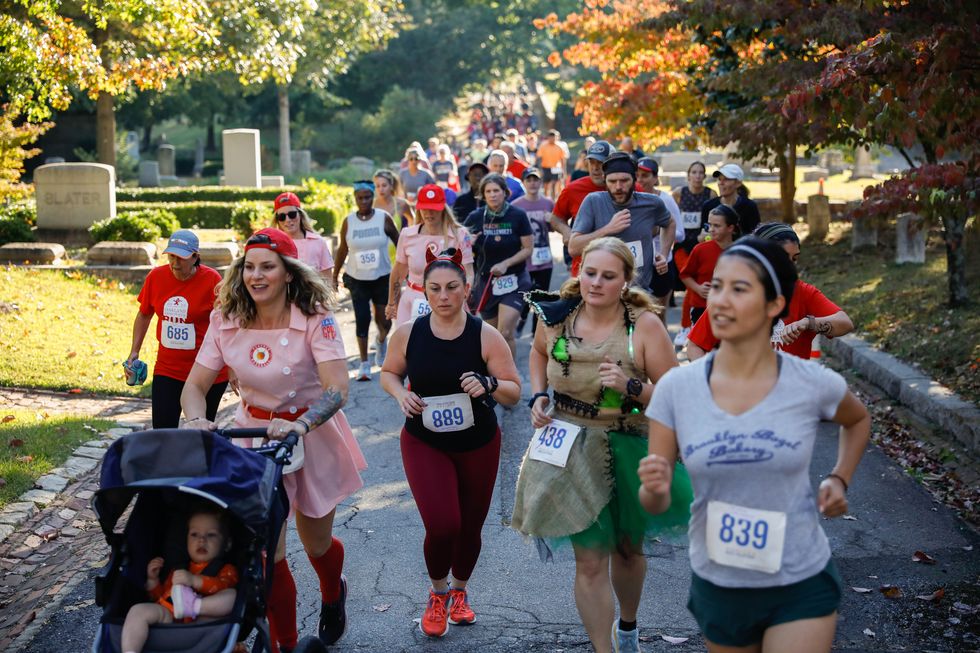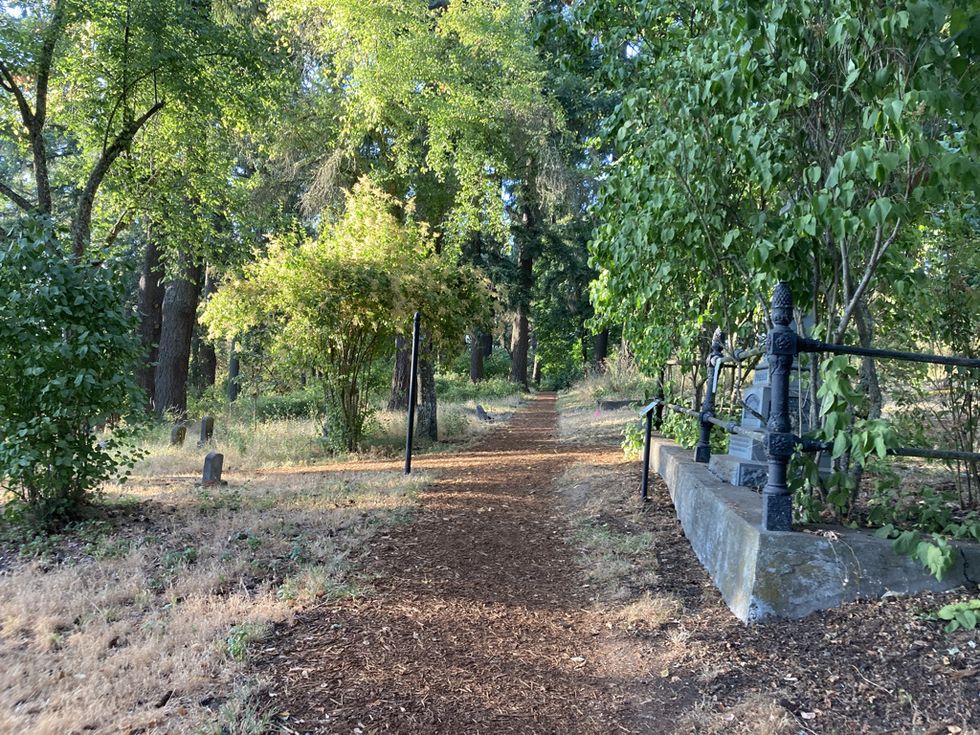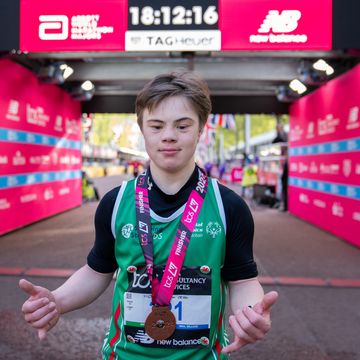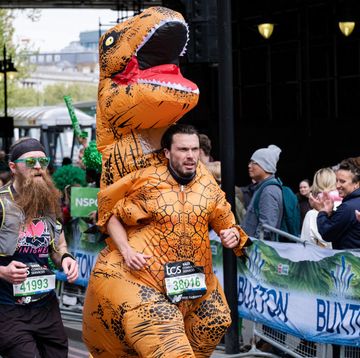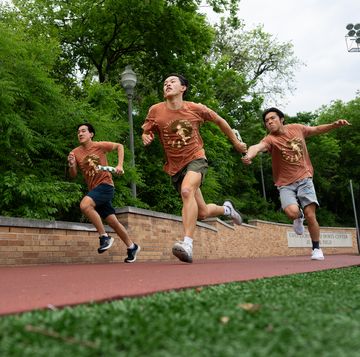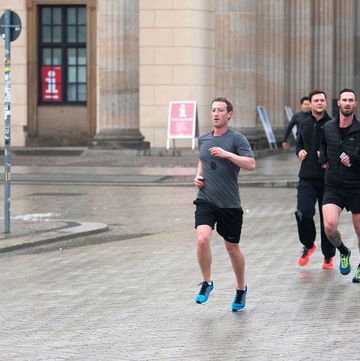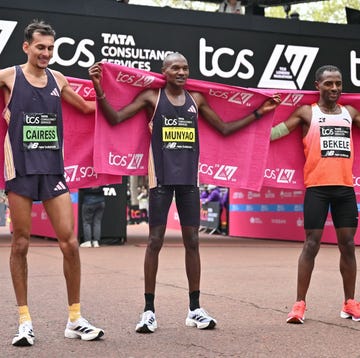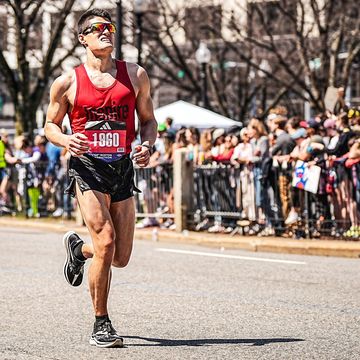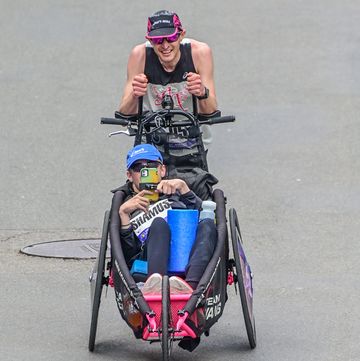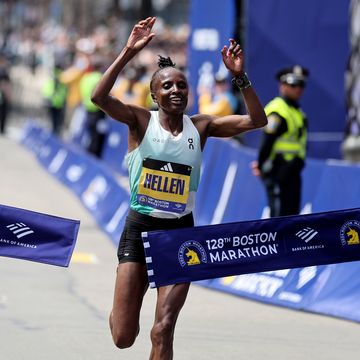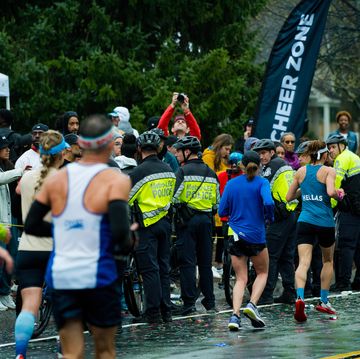Just south of the University of Oregon, sits the Eugene Masonic Cemetery—a ten-acre hilly plot that’s filled with Douglas Fir Trees and wood-chip trails. In a city renowned for its rich running history, it’s relatively common to see runners using the paths as a neighborhood cut-through or spot to work in some hills.
But last month, some residents started to notice red signs: “Runners, this is a cemetery NOT a training area.” The signs prodded discussion on Twitter, with some users scorning them while others emphasized the need to respect the dead. Some pointed out that seven blocks north is the Eugene Pioneer Cemetery, a slightly bigger area, which is a common warm-up spot for athletes competing at nearby Hayward Field.
Cemeteries can be a confusing middle ground between a green space and a solemn place of remembrance, and it brings up an ethical question: When is it okay to run in a cemetery?
Striking a balance
The Eugene Masonic Cemetery is private property—it’s an active burial ground. But Shawn Walker, the president of the Board of the Eugene Masonic Cemetery Association, clarifies that outsiders are still welcome in the space.
“I think it can be helpful for visitors to keep in mind that the cemetery is first and foremost a cemetery,” he said to Runner’s World in an email. “Visitors come to the cemetery to grieve, remember those who have passed on, and seek solace. Other ‘non-cemetery’ related activities are fine and encouraged as long as the activities do not disrupt the cemetery’s primary role.”
Not all cemeteries are privately owned; different types have emerged over the years. Take the Oakland Cemetery in downtown Atlanta. Oakland is the oldest cemetery in the city, founded in 1850, but it’s also the oldest public park.
The City of Atlanta owns the 48-acre space, but it operates differently from a church graveyard or military cemetery (don’t try to run in Arlington National Cemetery). Oakland is a “Victorian rural garden cemetery,” says Sandy White, the Director of Adult Programs and Volunteers at the Historic Oakland Foundation. Early cemeteries were connected with churches, but as cities grew, governments realized they needed more space to bury the dead, says White. But instead of a somber, religious space, these areas were also used as parks.
In fact, during the Victorian period (1837 to 1901), it was common for families to visit cemeteries for leisure. During a time when diseases like yellow fever and cholera were rampant, families would pack a lunch and visit their dead relatives. Nowadays, you’re less likely to see a charcuterie board in front of a gravestone, but some cemeteries still retain those park-like qualities.
Fifteen years ago, the Historic Oakland Foundation created the Run Like Hell 5K. “At the time, [the foundation] was really searching for things that would be good fundraisers and respectful of the grounds and of the people that are buried in Oakland, but at the same time, really serve the modern communities that were built up around,” White says.
The race—which features a costume contest—has become the largest cemetery race in the U.S. with 219 runners toeing the line at this year’s April edition. The money raised from the race helps keep the cemetery humming through beautification and preservation projects, and it’s a key part of Oakland’s identity as a public green space.
“It’s every citizen in Atlanta’s park as much as it’s our cemetery,” White says.
Appreciation is key
Ultimately, running in a cemetery comes down to respect.
Walker says the red signs at the Masonic Cemetery were put up after some runners started taking advantage of the open gates. He says training groups would come to the cemetery and disrupt the peace with drills like sprints and chain runs. Sometimes a coach would even shout and whistle at the athletes.
“We felt that this type of activity and training was not consistent with the environment that we believe is important to maintain in the cemetery,” Walker says.
He admits the red signs might come off as harsh, but it’s tough to convey the message clearly.
“We love having visitors in the cemetery and part of our mission is to maintain and operate the cemetery as a resource for the community,” he says. “I believe it can be perfectly appropriate for runners to run in the cemetery as long as their activities are respectful to other visitors and to the space.”
Rob Rueff is familiar with this balance. His favorite race is a small 5K in Franklin, Indiana, called the Sparkler Sprint. Held on the 4th of July, the race is a fundraiser for the Franklin Community High School cross-country team. The course meanders through a local park and the nearby Greenlawn Cemetery, and it reminds Rueff of trips to visit his grandparents as a child. In fact—the race literally goes past their graves.
“It’s like I can feel them cheering me on as I reach the final quarter mile of the race,” he says.
For Rueff, the cemetery is a reflective place of solace—but something he can combine with his passion for running. “When I’m training for races and I’ve hit a wall during training, I’ll drive down and run there,” he says. “I’ll make it a point to run by their graves just to check on things. It helps me clear my head and refocus on my training.”
Sarah Lorge Butler contributed to this report.
Theo Kahler is the news editor for Runner’s World. He is a former all-conference collegiate runner who’s based in Easton, PA. Previously, he worked as the newsletters editor at Runner's World, Bicycling, and Popular Mechanics.
